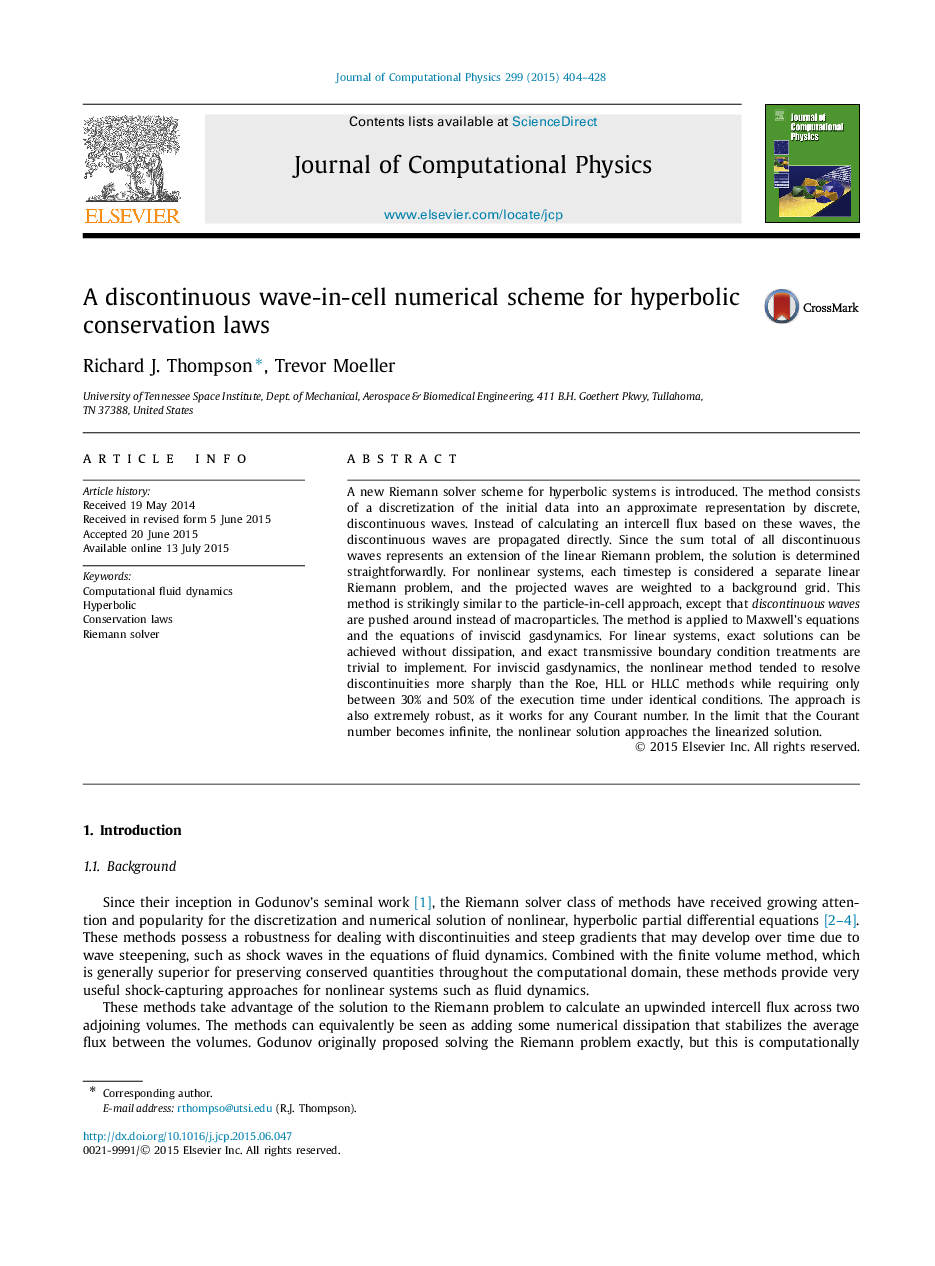| Article ID | Journal | Published Year | Pages | File Type |
|---|---|---|---|---|
| 6931106 | Journal of Computational Physics | 2015 | 25 Pages |
Abstract
A new Riemann solver scheme for hyperbolic systems is introduced. The method consists of a discretization of the initial data into an approximate representation by discrete, discontinuous waves. Instead of calculating an intercell flux based on these waves, the discontinuous waves are propagated directly. Since the sum total of all discontinuous waves represents an extension of the linear Riemann problem, the solution is determined straightforwardly. For nonlinear systems, each timestep is considered a separate linear Riemann problem, and the projected waves are weighted to a background grid. This method is strikingly similar to the particle-in-cell approach, except that discontinuous waves are pushed around instead of macroparticles. The method is applied to Maxwell's equations and the equations of inviscid gasdynamics. For linear systems, exact solutions can be achieved without dissipation, and exact transmissive boundary condition treatments are trivial to implement. For inviscid gasdynamics, the nonlinear method tended to resolve discontinuities more sharply than the Roe, HLL or HLLC methods while requiring only between 30% and 50% of the execution time under identical conditions. The approach is also extremely robust, as it works for any Courant number. In the limit that the Courant number becomes infinite, the nonlinear solution approaches the linearized solution.
Related Topics
Physical Sciences and Engineering
Computer Science
Computer Science Applications
Authors
Richard J. Thompson, Trevor Moeller,
